It all started to change in the 1950s, when the city embraced the fresh air of its South-West edge with the completion of the academic complex around the new campus of Moscow University, and then with the start of mass construction of apartment buildings in Cheryomushki – just as the public life received its first intoxicating gulps of fresh air after the suffocating late years of Stalin’s rule. “The thaw”, as Ilya Ehrenburg called this era of fleeting hopes and a looming re-freeze.
The 1956 photos of the South-West capture Moscow which is about to undertake the most important of its recent transformations, the Khruschev housing boom. The construction cranes crowd the horizons. The shots of Moscow University make me acutely nostalgic for the time I’ve never actually experienced. The trees are so small! The future shady campus of the Shternberg Observatory is all in the view, as it will never be again. The plaza between Chemistry and Physics buildings, and the gardens around the Biology building, are just delicately newly planted! Those were the days when my parents were heading to study there, and I can’t help remembering a verse by their fellow student. It probably hasn’t ever been published (outside of the Samizdat), but I just checked, I seem to be able to remember it all after all these decades.
| Посвящается Наталье Горбаневской А ведь когда-то я был не таким… Как мир был ясен! Как он открывался Перед глазами – Синий, голубой, понятный… Те - враги. Со мною рядом, Плечом к плечу – друзья. И шли корабли по намеченным курсам, И сыпался цвет у акаций, И только внутри, как биение пульса – Не сдаться! Не сдаться! Не сдаться! И щелкали глухо затворами ружей И падали навзничь со стоном, И мир мне был нужен, и сам я был нужен – Борцам, проституткам, ученым… О, как внезапно изменился мир! Как хлынул дождь, смывая краски с улиц, Отняв их блеск, возвышенность и ширь, А люди шли, сжимаясь и сутулясь, С испуганной растерянностью лиц. Нет, эти не похоже на героев, И даже не похожи на убийц. Здесь нет людей! Нет солнца! Нет прибоя! А кто-то там чертит и пишет, Уверен и радостен кто-то. От этого только и слышишь: “Работа, работа, работа!” Он ходит легко и бесшумно. Уверенность, твердость во взгляде. Он светлые носит костюмы. Он где-то читает доклады. А худенькая девочка в Москве По прежнему болеет, голодает, Частенько плачет (не в порядке нервы) Одна, без писем, без друзей, без денег… И пишет непонятные стихи. | To Natalia Gorbanevskaya There were times when I was different… How clear was the world! How it opened up Before my eyes – Shining blue, easy to understand: Those are the enemies. And standing next to me Shoulder to shoulder, are friends. And the ships followed their charted courses And petals rained down from locust trees But deep inside, it pulsated with the heartbeat: “Don’t give up! Don’t give up! Don’t give up!” With the muffled clicks of rifle bolts, Falling down, moaning, How much I needed this world, how I was needed myself – To the fighters, to the prostitutes, to the scientists Oh, how suddenly has the world changed! How the rain poured, washing away the colors of the streets, Taking away their shine, their elation, their width, And the people kept walking as they shrunk and bent down With a fearful confusion of their faces. No, they don’t look like heroes, They don’t even look like murderers. There are no humans left here, no sun, and no sea. But somebody there is drafting and writing Somebody is confident and content. From this one, you always hear: “Work, work, work!” His gait is light and quiet His gaze has unbending certainty He wears light-colored suits And makes presentations somewhere While a slender girl in Moscow Is getting ill again, is starving again, Cries too often… frayed nerves, All alone, without letters, friends, or money… And writes strange poems. |
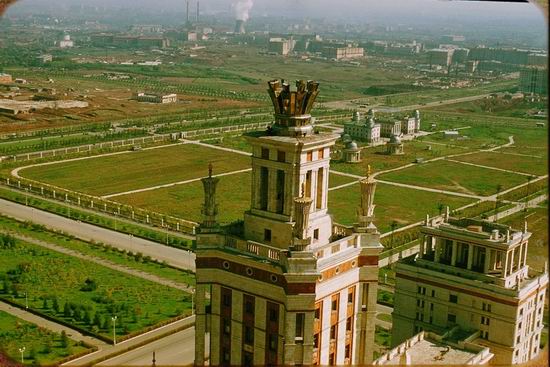
I just couldn’t resist peeking again at the photograph with the Shternberg Observatory (GAISh) and a veritable forest of construction cranes in the background, where the last pre-mass production highrises are going up along Leninsky Prospect. It’s almost like everywhere I look, I recognize something which deeply influenced me as a kid, and continues to shape my life!
Right in front of the twin smokestacks is the brand-new building of Zelinsky Institute (which puzzled me as a kid with its Latin MCMLIV on the pseudo-classic facade, that’s two years before this picture was taken). Gramps worked there, and I owe my first taste in rhyming to him - as well as an interest in chemistry (a peculiar Rio Wang connection here ... he was actually trained as a Synologist, being barred from majoring in then-nonessential Physics because of his lack of working class background, but he still managed to sneak in a second major in Chemistry ... and his knowledge of the Chinese turned out to be surprisingly practical in the 1950s when the Chinese students swamped his lab)
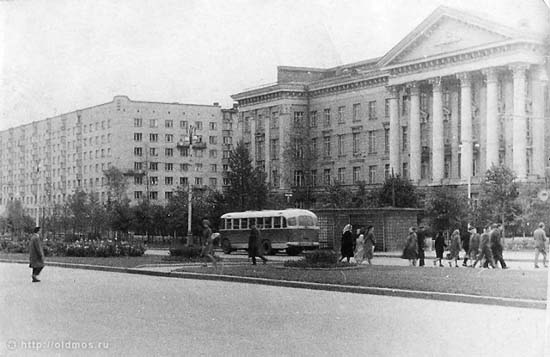 View of Zelinsky Organic Chemistry Institute, ca. 1966, from here
View of Zelinsky Organic Chemistry Institute, ca. 1966, from hereFar to left rises a cupola of the science library and the grand auditorium of Chemical Physics Inst; that’s where I heard Vladimir Vysotsky for the first time, which cemented my affliction with poetry. I’d rewind and replay the scratchy reels of magnetic tape again and again to memorize his lyrics, which could never be found in print.
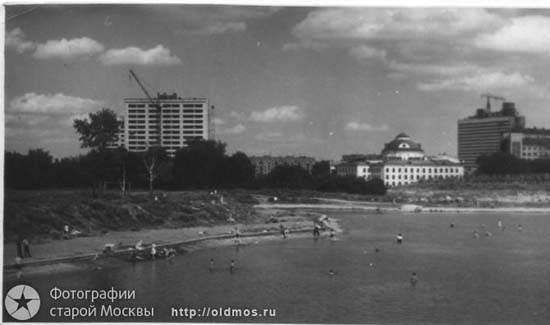 A 1966 view of the Chemical Physics Institute compound, from here
A 1966 view of the Chemical Physics Institute compound, from hereJust behind a long high-rise near the right edge of the image is the Steklov Institute of Mathematics, where in 1956, Vladimir Beletsky dreamed of space travel and of poetry as he worked on his Thesis in rocket mechanics. I suspect that the poem which I just recited belonged to him, but I’m not so sure anymore, it could have been written by another member of their student circle. But most of the verses in the little Samizdat book my Mom kept stashed on a secret bookshelf belonged to Beletsky; in time, it influenced me beyond measure!
A shallow ravine of Krovyanka Spring runs to left, in front of the construction sites; that’s where I got my first rush of victory racing on xc skis, to be fed over the years with countless adventure ski trips. A green grove on the near bank of the ravine would become, in 1962, the campus of Moscow Palace of Pioneers and Students, where I got my first unforgettable taste of biology research as a middle school kid.
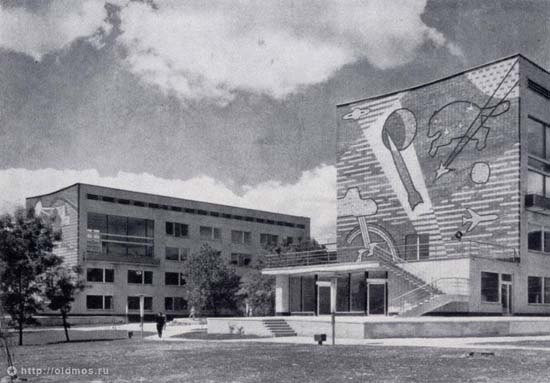 The Biological Sciences and Physical Sciences wings of Moscow Palace of Pioneers and Students. Mid 1960s, from here
The Biological Sciences and Physical Sciences wings of Moscow Palace of Pioneers and Students. Mid 1960s, from hereAnd on the far side of the ravine, almost directly behind the right-most of the turrets of the observatory, a crane is working on what will become a public school building, the famed “School Number Two” where I learned both to love math, and to stand up to the totalitarian authority.
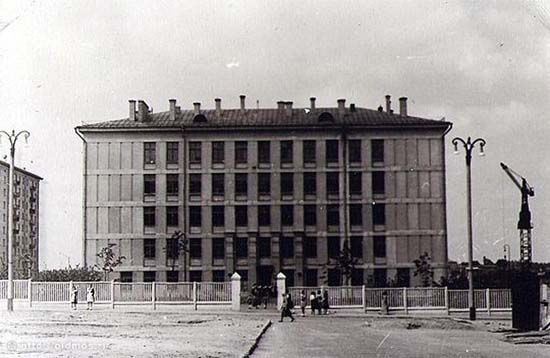 Moscow Physics and Mathematics School Number 2 in 1957 (supposedly it has been established in 1956, but another 1956 photo at oldmos.ru already has snow on the ground and the building construction isn’t yet finished then), from here
Moscow Physics and Mathematics School Number 2 in 1957 (supposedly it has been established in 1956, but another 1956 photo at oldmos.ru already has snow on the ground and the building construction isn’t yet finished then), from here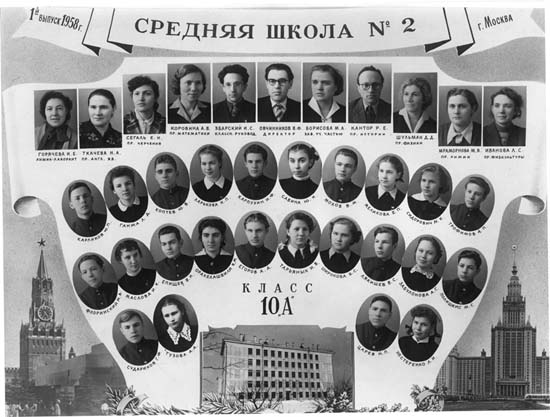 First graduating class of Moscow Physics and Mathematics School Number 2 in 1958, from here
First graduating class of Moscow Physics and Mathematics School Number 2 in 1958, from hereSo many fascinating stories there, so many outstanding teachers and students, I could go on forever with tales and links. Just sharing a few “crosscultural” stories which both affected me personally, and fit the mold of Rio Wang the best IMVHO:
Advanced math has been taught by Valery Senderov, ever bracing for a conflict with the authorities, and especially revered by high school math prodigies across the USSR for his fearless fight against discrimination in college admissions at Moscow University. His compendium of “Jewish math problems”, super-difficult oral examination problems reserved to deny admissions to the disfavored math major applicants, remains famous to this day. Even before his teaching stint, Senderov has already been expelled from college for freethinking. Eventually, the same fate befell him at the School Number 2. Senderov continuing teaching at an “Underground School of Math”, until its coorganizer, Bella Subbotovskaya, died in an apparent KGB assassination. He then went on to organize independent unions in the mold of Polish Solidarność, and spent many years in labor camps, until the bloom of Perestroika has finally set him free.
Senderov had no qualms about inviting grizzled dissidents to lecture at the school. Natalia Gorbanevskaya, a poet and an activist (to whom the verses cited in this post have been dedicated), recalls how she gasped when Senderov suggested her to give a talk on any literary subject as long as it was a tabooed subject. By then, Gorbanevskaya has already been through punitive psychiatric detentions for her role in street protests against the Soviet 1968 invasion of Czechoslovakia.
Another beloved teacher, “geographer” Aleksey Filippovich Makeyev, has been through Gulag camps before, as a school rumor had it, for 20 years. “Filippich”, as the students called him, confided his tragic story to just a few of them. A year after Stalin’s death, Makeyev has been one of the organizers of a bloody 1954 Gulag uprising in Kazakhstan. He sought to negotiate with authorities, and eventually broke ranks with the more radical leaders of the labor camp rebellion, and switched sides. After the uprising has been smothered in blood, the survivors have been sworn to secrecy, but many still remembered Makeyev as an arch-traitor rather than as a teacher who tried, against odds, to save the lives of youngsters. After Solzhenitsyn’s “Gulag Archipelago” broke the story and publicly labeled him a traitor, Aleksey Makeyev took his own life.
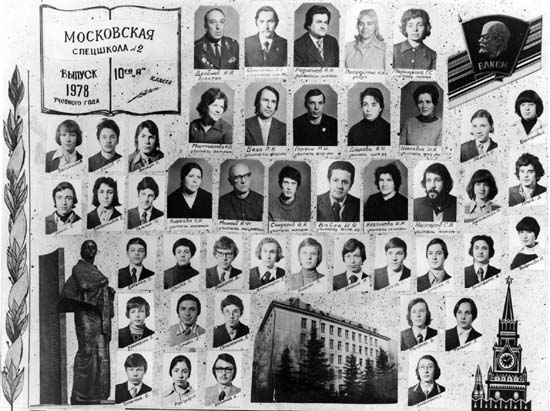 1978 graduating “A” class of Moscow Physics and Mathematics School Number 2. In the bottom row of the teachers, note shaven-headed Aleksey Makeyev, and Valery Senderov in his trademark rough wool sweater; from here
1978 graduating “A” class of Moscow Physics and Mathematics School Number 2. In the bottom row of the teachers, note shaven-headed Aleksey Makeyev, and Valery Senderov in his trademark rough wool sweater; from hereIt’s all green, growing, rising to the sunshine, breathing with hope in the 1956 panorama from the Moscow University tower. Just a few months before, Khruschev condemned Stalinist crimes from the podium of the XXth Party Congress. In another few months, Sputnik will cross the skies, and youth of the entire planet will converge in Moscow for a congress. With all the burden of the hindsight, this time is still remembered as the springtime of the Thaw. In an unscientific polls, I asked the older Russians around about the events of 1956. I heard about heavy flooding, and about Kruschev’s trip to Europe onboard a navy cruiser. What about the Soviet troops invading a “brotherly nation”, I pressed? The first reaction was usually, “do you mean Czechoslovakia”?
The October 1956 invasion of Hungary may have been the first frosty sign that the Thaw isn’t going to last, but surprisingly few people recognized it, especially in comparison with the 1968 reaction to the attack on Czechoslovakia. Even those few who, even at the time, protested the 1956 invasion, struggled with an explanation. Was the country, deep in its core, still gripped by morbid totalitarian fear? Did it mean that the independent news still failed to reach the Soviet people? Did the gradual demise of “communal apartments” starting in the late 1950s instill some sense of privacy into the population, loosening the totalitarian control? All of it may have mattered, but perhaps the most important factor was the lasting shadow of WWII and its poisonous spirit of distrust between nations, the sore divide between “self” and “enemy”, the lack of real sincere friends. Even Solzhenitsyn, in his first (and suppressed) literary work, the “Feast of the Victorious”, painted the worldview in which everyone, erstwhile allies and adversaries alike, were in truth the enemies of the Russians. Even the Steplag Uprising of 1954, the one where my teacher Aleksey Makeyev served on elected board of rebel prisoners, cracked along the post-WWII ethnic enmity lines, with the Russians distrusting the separatist fighters from Ukraine, and the latter demanding resignation of a Zionist board member.
In the end, empathy and solidarity between peoples may be easy to destroy, hard to rebuild. But one shall never give up trying!
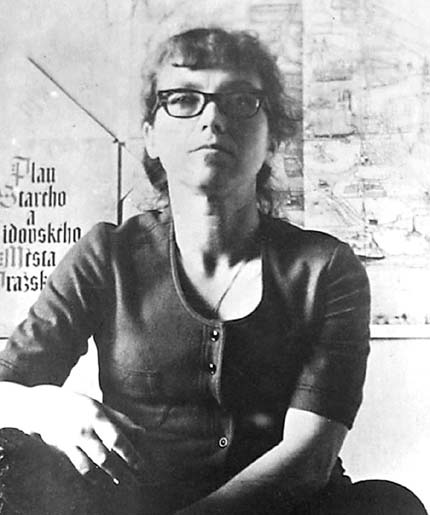

























































5 comentarios:
thank you for your words, MOCKBA
Thank you, Effe! I must admit that I miss seeing *more* blog entries with poems and tales here (and so your contributions are greatly appreciated)
Москва, you’re welcome to add more at any time – it will be greatly appreciated!
Another Beletsky verse, in time for the Space Flight Day on April 12th:
Медленно, медленно, медленно
Падают камни со скал
Светится пятнами бледными
Кратеров лунных оскал
Тянется, тянется, тянется
Долгая лунная ночь.
Тот, кто с удачей расстанется,
В космосе вечно останется.
Кто нам сумеет помочь?
Больше не встретимся с близкими,
Их не услышим привет.
В кратерах лунных записками,
Да на земле обелисками
Людям останется след.
And one more. While I still remember it:
Батюшки-светы, какая жалость,
Глянь, что от нашей ракеты осталось:
На клочьях железа - цвета побежалости
Рубим и режем без всякой жалости.
Орудуем ломом.
Ох, тяжело нам.
Publicar un comentario